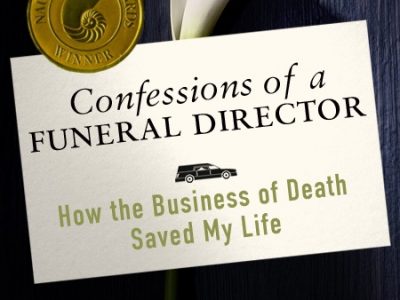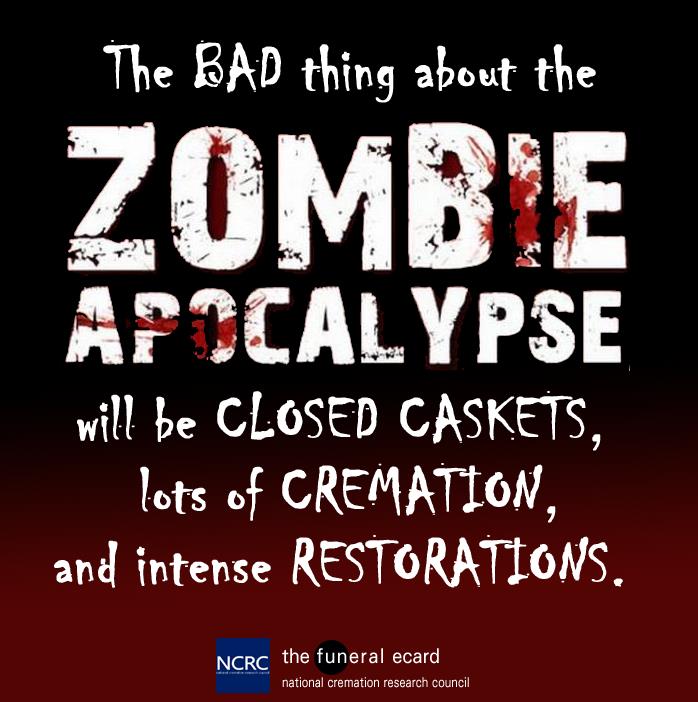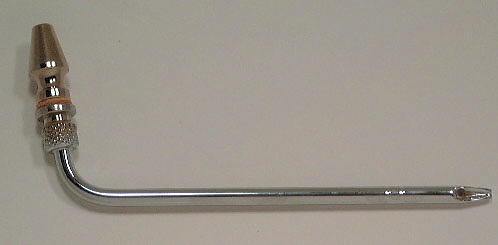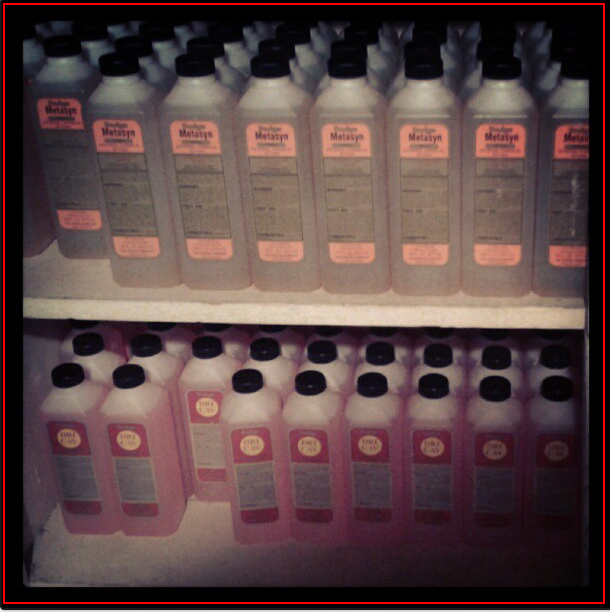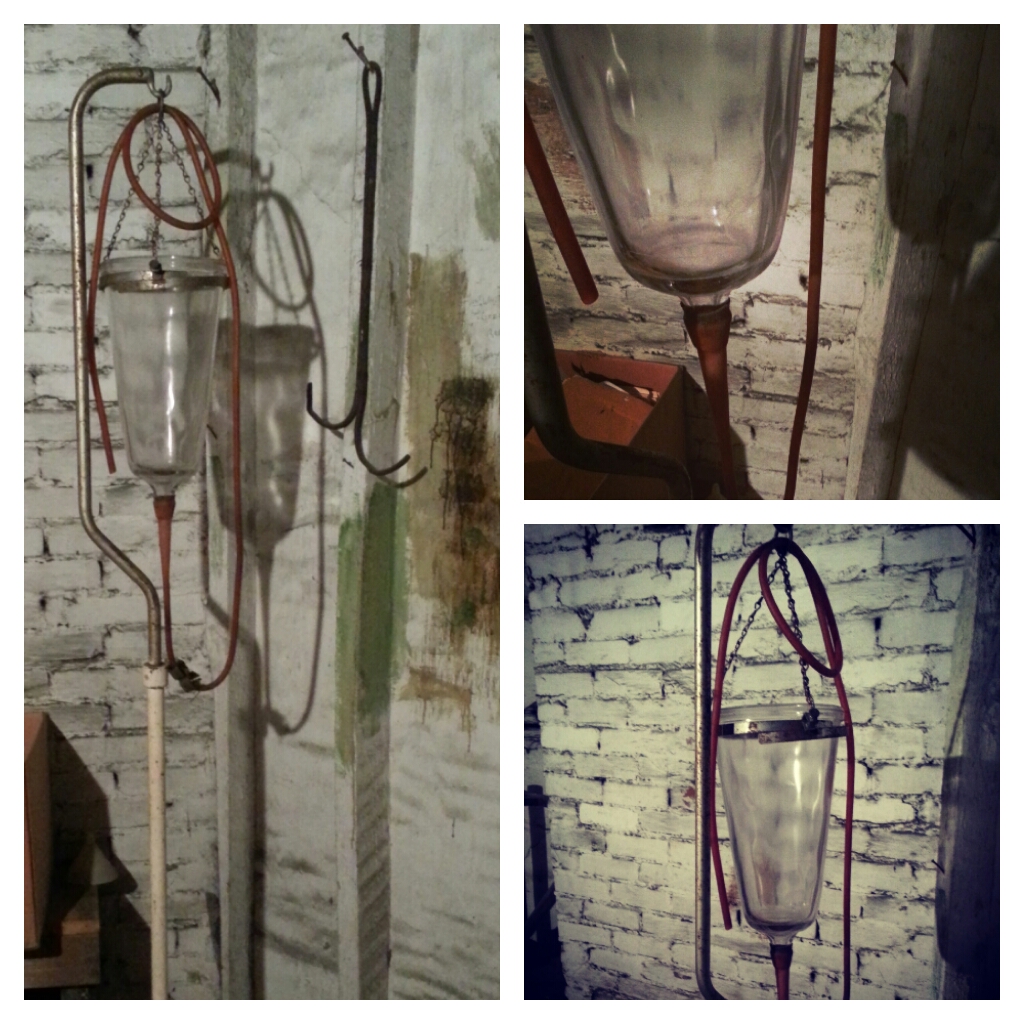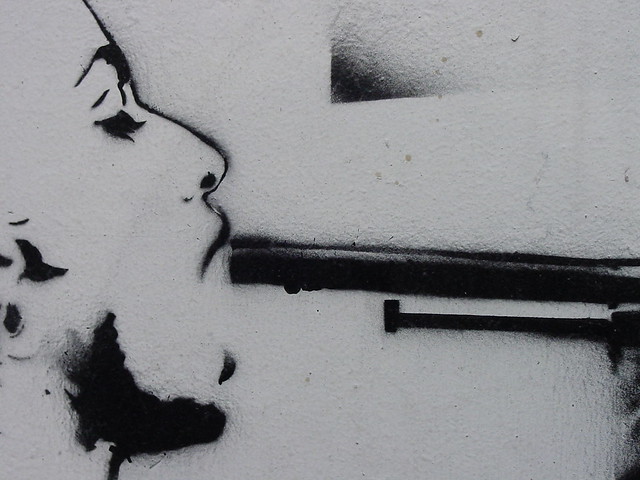Six Good Things About Embalming and Restoration

© 2009 Nathan Jongewaard, Flickr | CC-BY | via Wylio
Morticians have been taught that embalming is the foundation of the funeral business. That without embalming … we’d be buried. During the modernization of America and at the beginning of the “American way of death”, embalming was the foundation. But we no longer exist in a modern paradigm, we exist in plurality and fragmentation with “American ways (!) of death”.
I don’t think the funeral profession’s survival depends on embalming nor do I think embalming is the pinnacle of a good funeral. England, Canada and Australia are examples of industries that exist without the centrality of embalming. And it would be very neocolonialist of us to assume that our way of embalming represents the best and only way for healthy funeralization.
Despite this preface, I do believe embalming and restoration is valuable. Here’s some short history of the practice as well as some possible benefits of embalming and restoration that I’ve observed.
One. Children.
The fact that my wife and I are infertile has — for some reason — made me extra sensitive to the sight of dead children … or at least that’s the reason I give for the sickness I feel when seeing a child’s corpse.
He was three years old. An all too young victim of cancer. I returned from the Children’s Hospital with his withered corpse and found my grandfather — dressed in his embalming gear — awaiting me in the morgue. That day we had a couple death calls and I had other work to do, so I left my grandfather alone to embalm this young body that had been emaciated by the cancer and the chemo. In fact, I didn’t even offer to assist my grandfather because I knew the embalming experience would put me in a horrible mood for the rest of the week.
Two hours later I stuck my head in the morgue to peak at my grandfather’s results. And what I saw was nothing like the boy I had brought back from the hospital. His skin, which had been a greenish tone, was now a healthy looking flesh tone. All the indentations on his face from the breathing machines, all the tube and machine imprints that had marked his body had been worked out by my grandfather’s expert work. Even the boy’s weight looked more natural, as the embalming filled out the weight the cancer had taken.
Two. Accidents, Cancer Emaciation and Tragedies.
For the most part, we’re able to restore various degrees of accidents, cancer emaciation and tragedies. It helps. It helps to see your loved one in a restored state.
Three. It helps make the symbol of death look pretty.
Dr. Erich Lindemann (grief management pioneer) says that a defining characteristic of persons dealing with complicated bereavement is that they never saw the dead body of their loved one. Although his observation isn’t based on any clinical studies, I think most funeral directors have recognized the weight of Dr. Lindemann’s statement.
An embalmed body helps the symbol look good. There’s nothing wrong with that. It’s a good thing. In fact, at times it’s a beautiful thing.
Certainly, embalming isn’t necessary AT ALL to see the dead body. But, it can help.
Four. War.
The emphasis on embalming the corpse for aesthetic purposes finds its popular beginning in the American Civil War. As a humane token to the grieving families of soldiers who were killed in action, an attempt was made by the armies to return the bodies home for proper burial. To avoid the cruelty of shipping home (often by train) a decomposing body, “field embalmers”, comprised of civilian physicians and some undertakers, began offering families the option of having their sons embalmed. Those that had the “bodies of their relatives returned from the war theaters … could give testimony to the effectiveness and desirability of the chemical embalming by injection” (Habenstein and Lamers 1955: 336).
While refrigeration, etc. can keep persons KIA from decomposing, embalming and restoration can allow the family to see their son or daughter in a restored condition one last time. In some circumstances, this makes embalming invaluable.
Five. When the Body Has to Wait …
On the other side of the coin, maybe there’s a person deployed in the foreign field. Or maybe one of the deceased’s sons lives in China. And the quickest they can get home is in three weeks … and they feel they MUST see the deceased. It’s possible to keep the deceased in refrigeration for three weeks unembalmed, but with a three weeks wait, embalming would be the much preferable option in this case.
Six. Sometimes DIY Isn’t the Best
There’s a lot of “death hacks” and DIY options that all but eliminate the need for a funeral director. But, this doesn’t mean funeral directors are outdated and unneeded. Like taxes, wedding planning, buying a house or even giving birth, there’s a range of symbiotic DIY options and professional involvement. While it’s usually possible to have a DIY funeral, funeral directors are beneficial during the death process.
And while it’s possible for a family to prepare a body for a home funeral, it’s not something everyone wants or can do. We’re here, if you want us. Some of us are VERY good at embalming and restoration and can help your loved look more like the person you remembered in life.
10 Reasons Why Embalming is Dying
Death rites and rituals are hardly ever static. Change is the constant in both life in death. And so it is that change is here for the funeral business in the United States. We sit in liminality.
The “traditional funeral” (aka embalming and burial [as defined by the FTC]) in the US is becoming outdated for many reasons. It’s being replaced by cremation and (hopefully) a more natural orientation.
Yet, some (many?) funeral directors here in the United States and elsewhere are still preaching the Gospel that the presentation of an embalmed body is the foundation of the funeral business.
If embalming is the foundation of our practice, it’s a very shaky foundation. Here are ten reasons funeral directors shouldn’t deify embalming.
One. Embalming Will Slowly Die
Cremation is on the rise. Arizona has a 60% cremation rate. And the projections are that the rest of the country will eventually catch up.
Embalming and burial is “the traditional funeral” for a generation that is dying. And we should serve that generation and their needs. But, when that generation is dead, most will eventually opt for cremation. Embalming is more so a trend than a religion; and that’s an important distinction.
Two. Value Vs. Cost
There’s a difference between value and cost. People will pay for things that they see as valuable. And people are increasingly NOT seeing value in the traditional funeral to justify the cost of embalming, casket, vault and burial plots. Increasingly, people don’t have enough money for life, yet alone death. The lack of funds combined with a perceived lack of value is creating a smaller and smaller market for the “traditional funeral.”
Three. Botox
With the increasing rise of Botox, people are already embalmed and will look just as good in death. Donatella Versace? Pete Burns? I’m just kidding. Botox has nothing to do with this conversation. Okay, bad attempt at humor. Moving on to the thesis of this post.
Four. The Gospel Isn’t True
I used to believe the Gospel of the “Traditional Funeral”. I was taught to believe the Gospel. That if you saw the body of the deceased you could repent of your death denial and place your faith in death acceptance.
Don’t get me wrong, I do see value in the traditional funeral. There is value in restoring the symbol of death. And, in many ways, the traditional funeral is a microcosm of the grief process. But the psychological value and sociological rites that come with embalming can be had from other types of disposition, especially when there’s more involvement from the friends and family of the deceased.
Five. Cremation Can be Converted
In funeral school, we were taught to fear this transition. We were taught that cremation and other alternative burial forms were THE ENEMY. They were the enemy to our bottom line (if people cremate, they wouldn’t need embalming, they won’t need a casket and they probably won’t need a vault). The ENEMY to our way of life.
AND, cremation and natural burial are the heresy to the Gospel. With cremation you just can’t repent and have faith. BUT, even cremation can be redeemed. We – at our funeral home – always give the family (and often encourage the family) the option to have a small private viewing before cremation. Allowing them the viewing helps their grief process AND allows them a more inexpensive funeral option.
Six. The Zombie Apocolypse
And there’s always THAT to worry about.
Seven. There’s Probably Better Psychological Benefits in Natural Burial
It just makes more sense that those who took care of the deceased in life should also do so in death. And when we (the so called funeral “professionals) are cut out, it may (probably) be a better aid in grief work to do it yourself.
Embalming helps confront death denial. But natural burial does it better because it often allows the true professionals to play their part.
Eight. Urbanization Creates Expensive Cemetery Space
One practical reason we can still bury casket, vault and body in the US is because we still have land. Where land is scarcer and urbanization is more of a reality, cremation is the pragmatic choice. As we become increasingly urbanized, and local cemetery space becomes more sparse, we will – by necessity – opt for cremation. For instance, in large towns in Europe the cremation rate is between 70 to 90% while a full burial is only reserved for the wealthy aristocracy who can afford grave plots.
Nine. We Live and Die in Transience
In times past, generation after generation lived and died in the same area, if not the same small town. Today our jobs, dreams and wanderlust have pulled our families and communities all through the US and the world.
In the past, you wanted to be buried with your people. And you see this in old cemeteries. Generation after generation of Suchandsuch family are all buried within a couple caskets lengths of each other. We live in transience and our desire to be buried with out people isn’t so easy anymore because our people are buried all … over … the country. And so we don’t bury with our people, we spread the ashes in an area that best represents the deceased.
Full burial just doesn’t have the same communal appeal that it did for older generations.
Ten. We Are Selling Ourselves Short
If we think embalming is the very best we have to offer the grieving masses, we’re missing out on our true potential. I think the value that funeral directors have to offer is much less “services provided” focused and much more rites and rituals focused, where we’re able to translate our experience with death and death rites into meaningful ritual. AND, if those meaningful rituals include embalming, then great.
In fact, I envision future funeral schools becoming much more focused on bereavement studies with the recognition that funeral directors are on the front line of the grief process. Our value, I believe, shouldn’t be solely in our ability to embalm (I still love you Jack Adams), but in our ability to help you through healthy rituals and aid in celebrating the life and death of your loved one.
I see a future where funeral directors — more than now — can stop serving our religion and start serving families. Because our religion is — and always should be — helping You.
Death Positive
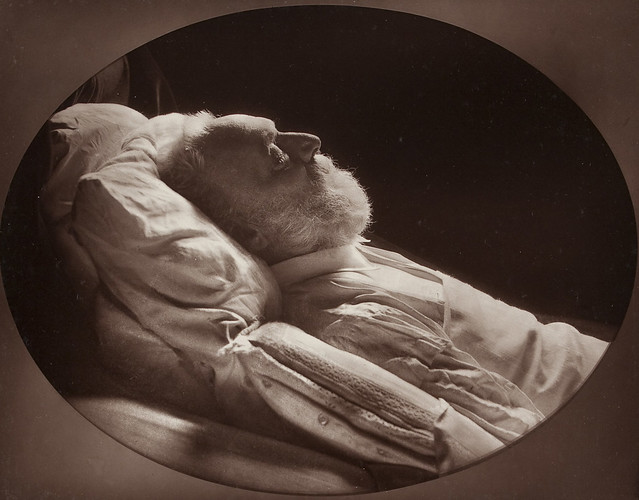
© 1885 Museum of Photographic Arts, Flickr | PD | via Wylio
The metanarrative that we’ve been fed
Is that it’s always bad when someone’s dead
That death is public enemy number one
And that there’s nothing good when life is done.
*****
It’s true that death hurts me and you
And it’s true that death can be tragic too
It’s true that grief will never leave
And it’s never good to be bereaved.
*****
But the idea that death is all bad is a lie
It’s hard to see but let me help you try;
When your eyes adjust at night you can find
That this is the time for the stars to shine.
*****
We’re used to the day so it’s hard to see
But death’ darkness has its own kind of beauty
It’s not glamorous and it’s certainly not glorious
But caring for our dead is never ever worthless.
*****
For in the dead we see our future and our past
We see very clearly that some things don’t last
It helps us remember what’s valuable and real
It helps us remember that love is our ideal.
*****
Death is the friendly reminder that life is short
And it reminds us to only pursue things of import
And when our eyes see our own setting sun
If we lived with death in mind, we’ll hear “well done”
Historical Quickie on Arterial Embalming Equipment
In the frustration of multitasking the details of four new calls, I decided to channel my angst into some spring cleaning. A new computer arrived yesterday, so in between the set up I threw all of our old lets-save-this-cause-we might-need-it tech in the dumpster.
After cleaning out the second floor of a tape player, two broken printers and a 30 pound monster monitor, I shifted my attention to the gallows of the basement … where ALL the old equipment goes to rest. After finding an 18 year old Compact monitor, I found the old embalming machines.
In our morgue today rests a Porti-Boy, the pinnacle of modern embalming tech.
With the Porti-Boy, you can control the pressure of the embalming fluid and the rate of flow via the little knobs on the left and right of the console.
The end of the rubber tube is where the arterial tube is inserted.
Once the incision on the deceased is made and the desired artery is raised (usually the carotid), the arterial tube is placed into the artery, the Porti-Boy is turned on and the fluid pushes out the blood via an open vein, replacing the blood with embalming fluid.
That’s how it’s done today.
Our funeral business is over 160 years old. And when we first started embalming, there was no electric Porti-Boy. In fact, there was no morgue to house the lovely embalming machine.
We came to your house. With our own equipment. By the time my grandfather was a teen, this tradition of embalming at the deceased’s house had waned. He remembers doing it a dozen times or so.
When I went down to the basement to clean out the old computers, I found the old embalming “machine” that my great grandfather would have used. It’s called an embalming gravity flask and stand … or something like that. I’ve actually used this contraption once when we lost electricity during a storm. And it worked.
You put the mixed embalming fluid in the flask, and raise the stand to find your desired pressure. The higher the flask, the more pressure it produced to push the blood out and the fluid in. My predecessors would lug this thing to the home of the deceased, put the body in the kitchen and try their best not to spill any blood. How they kept the blood from spilling (without the use of an embalming table), I have no idea.
My grandfather recounts that he and his dad used to play “who spills the least blood droplets on the floor” game. Apparently – per my grandfather’s selective memory – he would always win.
The Artistry of Suicide
Pulling the skull pieces from the wall
The brain matter spread over it all.
You didn’t intend it but your last grace
Is that at least you didn’t destroy your face.
*****
Maybe those you left behind will view
The pieces I put back together of you
But that wholeness, security you broke
Have burned and scattered in the smoke
*****
Of that gun you put between your jaws
When you blew that hole through the laws
Of life. A life you rendered as a tithe
To the world’s darkness and Death’s scythe.
*****
I look at your head, disfigured and displaced
And I can’t know the darkness you faced.
Perhaps the disfigurement is your artistry
Opening up to us the inside we couldn’t see.
*****
“I see it! I see it!!! I SEE IT!!!” I yell
As I look upon the art of your hell
Behold your magnum opus is your final scene
But I will work to ruin it and make you clean
*****
Of the blood, the cracked skull and pin
Together your broken, frayed, discolored skin
I will restore and embalm your broken head
While we all wish you back from the dead.
